Text
Disaster Preparedness and Management in the Local Community

Disasters are one of the most natural and recurring events that can strike a particular area at any given time. These can range from calamities such as typhoons and floods, to devastating hazards such as earthquakes, tsunamis, and volcanic eruptions. The Philippines is one of the most disaster-prone countries in the world, and its natural state causes us Filipinos to prepare, implement, and develop disaster management plans to increase our resilience and lessen our vulnerability to approaching disasters.
With this, local communities such as barangays have also implemented their own disaster risk preparedness in order to educate and orient its community members on what to do during such events.
My barangay is situated at Barangay 502, located in the City of Manila under the administrative district of Sampaloc. It’s total voting population is approximately 400 citizens, and it is currently ran by the administration of Mr. Jose M. Dee.
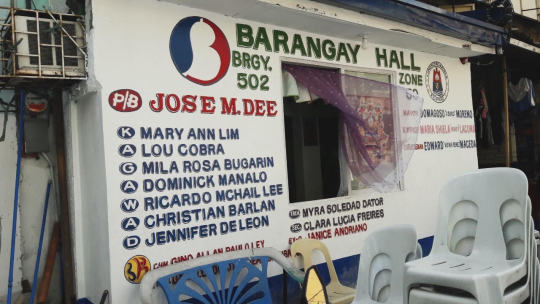
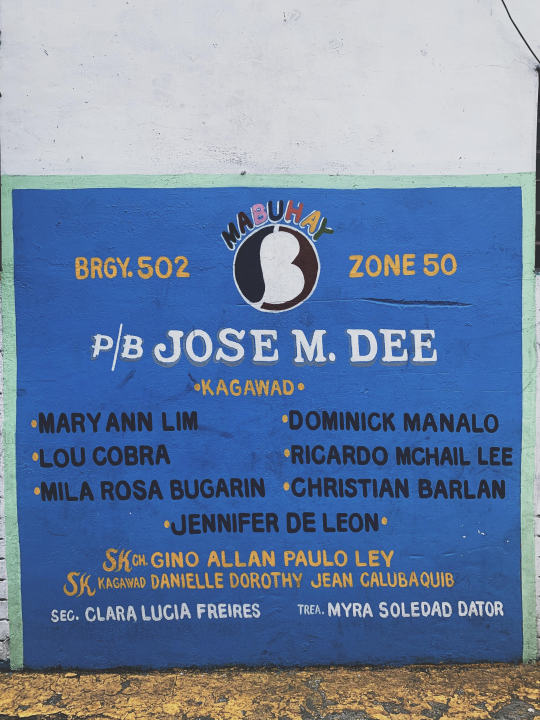
Before becoming the current Barangay Chairman, he first began as a Barangay Kagawad for served for 19 years before deciding to run for Chairman. In his history of work, he had seen and experience the different adversities of the Barangay. According to Mr. Dee, the major hazards and risks that frequently struck the barangay are typhoons and drastic floods. He emphasized that among the calamities he had experienced, Typhoon Ondoy was by far the worst and most devastating. It was during this time that the streets and drainage systems in the district of Sampaloc have not been renovated, and so most houses that lined the shallow streets were consumed by floods. Moreover, the series of typhoons that followed after Ondoy also made it difficult for the barangay officials to clean the surrounding area and drain the leftover flood.
In my initial interview with Mr. Dee, I learned that the issues confronting the community were mostly typhoons and floods. I believe that these disasters happening in the community is the result of our human activities, such as throwing trash recklessly in the streets and not having proper waste disposal. Mr. Dee said that one of the founding problems in the barangay that caused drastic floods were poor drainage system, and this convinced me that us residents also have a negative contribution to the hazards that happen in the community. Our ignorance and lack of discipline make the effects of hazards worse, thereby increasing the damage to our community.
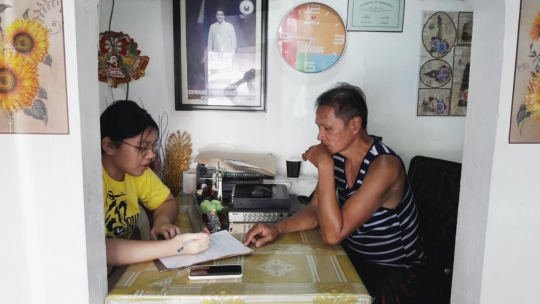
Mr. Dee claimed that typhoons and storms struck the barangay annually during the rainy seasons of June to October. He and the other officials already anticipate the incoming rains during this time, and they made sure to listen to the radio and news announcements to effectively prepare for calamities.
In the event that calamities do strike the community, Mr. Dee stated that areas with the most evident damage will be those houses in the shallower streets. The most affected will be those residents who only have single-story homes with no second floors, or those who do not have homes at all. Calamities can damage the infrastructures, buildings, and houses of residents and can cause diseases and illnesses in humans such as fever, dengue, and leptospirosis.
The disaster situation in my community can be greatly related to the conflicts faced by the Philippines during calamities. When typhoons and storm surges hit a particular area in the country, it suffers the same amount of damage as anywhere else. It causes flooding, it ruins communities, and it creates communicable diseases that cause death to humans annually. This is where the importance of disaster risk preparedness and management comes in. It should be duly recognized and implemented by all communities in the country so that we could have a better response and preparation for such disasters, as well as to rehabilitate and recover faster afterwards.
The barangay’s disaster preparedness and management involves improving the waste management and disposal of the areas and frequent checking of the infrastructure’s conditions. During calamities, he and the barangay officials also monitor the flood levels and check the safety of its residents. Sometimes, they also give out free lugaw or champorado. In the future, Mr. Dee plans to place fire extinguishers around the barangay, and to conduct more fire and earthquake drills for its residents. He is also planning to construct a bigger and wider court to create a hazard-free space in times of earthquakes.

After the interview, my dad and I took a short walk around the neighborhood to take note of the community’s safe and hazardous places.


The first thing I noticed right away was the location of the barangay hall of my community. Mr. Dee owns a kariton business next to the barangay hall, which was exactly beside a gas station. I identified this as a hazardous place. When a fire is situated in or near the barangay hall, it could grow faster and become bigger due to the presence of flammable materials. When it comes in contact with the gas station, it could cause a massive explosion.
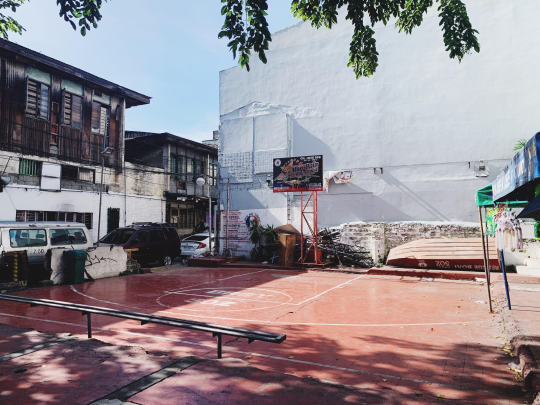
A safe place in the community is the open court facing Espanya boulevard. It is not as big to cater all of its residents in one space, but earthquake drills and stimulations can be practiced here for good measure and preparedness.


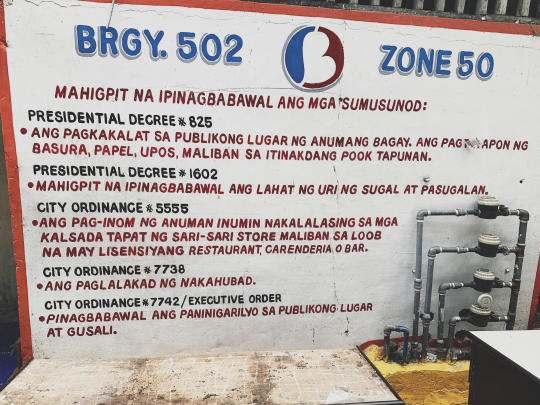

Furthermore, I also identified the best practices implemented by the Barangay. The boat in the first picture can be seen at the open court, where it is used by the officials in times of high and damaging flood. Some outposts in the community also have its designated water level measurement to determine if the flood is still passable or not.
These wall inscriptions found near the barangay hall also serve as best practices in reminding its residents in times of disaster. The second photo shows a list of emergency hotlines that people can contact for immediate help. Meanwhile, the third photo displays the different laws and regulations for people in the barangay to follow. It also emphasized on the regulations for garbage disposal so as to prevent future drastic flooding.
OVERALL REFLECTION AND SYNTHESIS
After conducting my BDRRM kwentuhan and community walk, I came to the realization how important disaster risk preparedness and management is in readying all of us for crisis, disasters, and calamities. Recognizing the impacts of disasters is equally important as determining the things we can do to prepare for it and recover from it right away. Moreover, the community walk taught me that it is essential to be familiar to your community and its potential hazards. One of my barangays main problems were flooding due to inefficient waste disposal, and being aware of my community helps me to discipline myself better in throwing trash. Being knowledgeable of your surroundings can contribute greatly to your safety and chances of survival.
We need to address the issues of disaster in our country because it could also mean our suffering and inability to survive. Being aware of the impacts of disasters enables us to plan, produce, and implement strategies to combat its damaging effects. It is also a way for us to identify our resources and skills to increase our resiliency and cope better in times of disaster. We can address these adversities by improving on community planning that will establish the needs of the community members and its susceptibility to hazards, making community disaster evacuation maps more accessible and available to all citizens, and conducting frequent assessments of vulnerable communities.
Similarly in my own way, I could use this knowledge gained in my NSTP to raise awareness and educate people on what we should do in times of disasters.
Other sources used:
1. NSTP-CWTS Chapter 4: Disaster Risk Reduction and Management https://ust.blackboard.com/bbcswebdav/pid-2324934-dt-content-rid-22103812_1/xid-22103812_1
2. NDRRMC: National Disaster Risk Reduction and Management Plan 2011-2028 http://www.ndrrmc.gov.ph/attachments/article/41/NDRRM_Plan_2011-2028.pdf
Pauline B. Panganiban
C-AB-8
1 note
·
View note